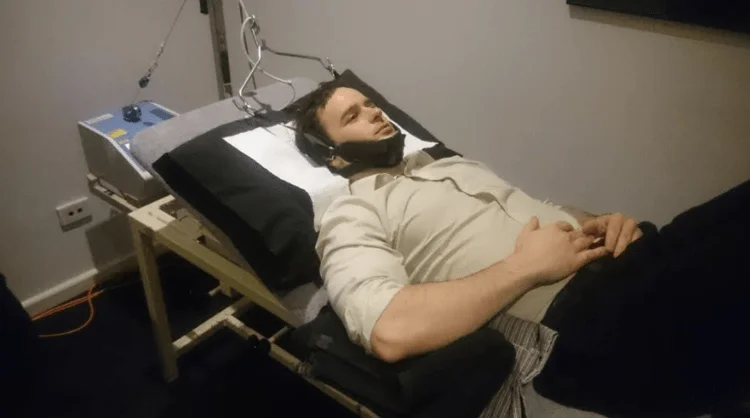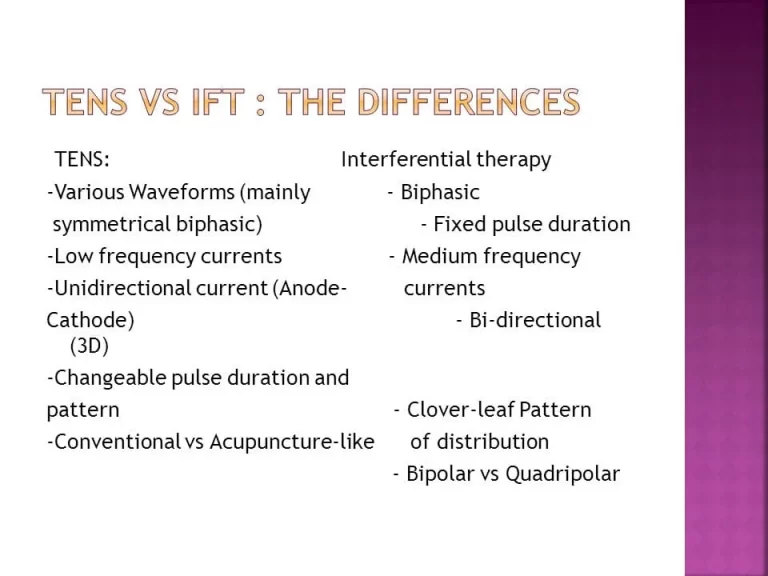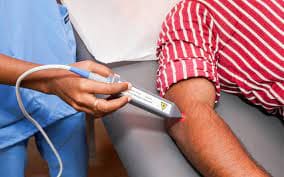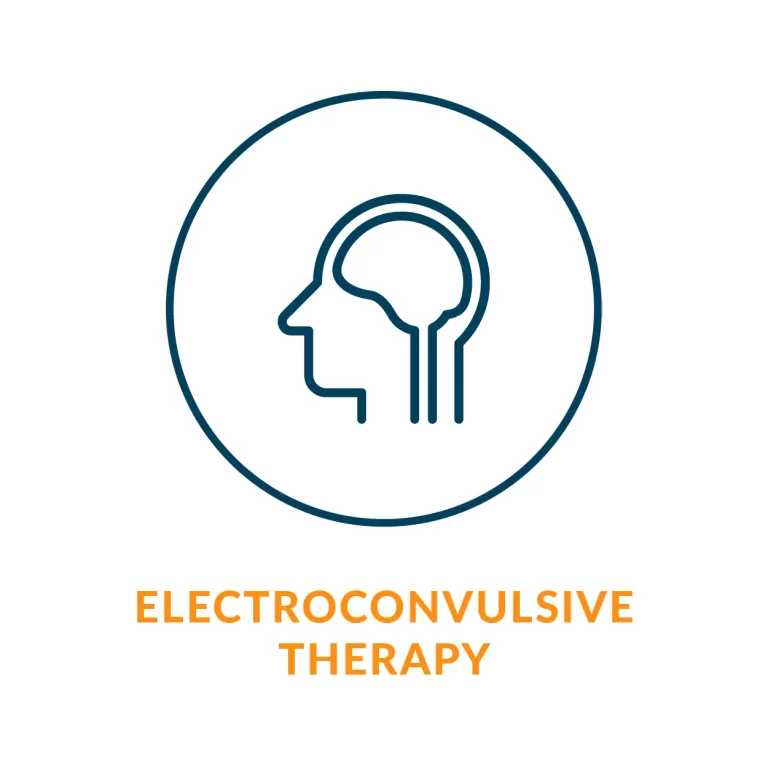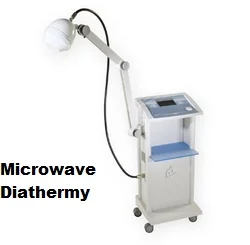Cervical Traction
What is cervical traction therapy?
Cervical traction is a therapeutic technique used to alleviate pain and discomfort in the cervical spine, which consists of the seven vertebrae in the neck. This method involves applying a gentle pulling force to the head, stretching the neck to create space between the vertebrae.
By doing so, cervical traction aims to relieve pressure on the spinal discs and nerves, promote relaxation, and enhance the alignment of the cervical spine.
Cervical traction can be performed by your healthcare practitioner or by you at home. It can be done manually (by hand) or using a cervical traction device. Cervical traction provides greater space between the vertebrae in your neck, regardless of how it is administered. Reduce the strain and stress. It is used to treat symptoms such as pain caused by various diseases and difficulties and Space between the bones in your neck.
Traction treatment involves transferring a longitudinal force to the axis of the spinal column. In other words: To stabilize or modify the position of the head, sections of the spinal column are pushed in opposite directions using weights or a fixation device. The patient must stay in bed or wear a halo vest. Traction is a physical method that reduces pressure on painful spinal discs.
Traction is a manual stretching of the spine that relieves pressure on the discs and hence the individual’s pain.
Segments of the spine:
- The cervical spine: The neck.
- The Thoracic spine: The upper back.
- The Lumbar spine: Lower back.
Cervical traction gradually separates the vertebrae of the cervical spine.
Definition:
This non-invasive technique relieves symptomatic pain from many cervical diseases.
It includes gently extending your neck and separating the disc and joint surfaces of your cervical spine.
Types of cervical traction:
There are three forms of cervical traction, which can be administered in different ways:
Manual cervical traction:
Physical therapists use manual cervical traction, which involves gently pulling on the neck and head. Pulling and relaxing often occur in a cadence, with each position lasting up to 10 seconds.
Mechanical cervical traction:
Mechanical cervical traction includes attaching a harness to the head and neck while resting on the back. A machine that exerts traction force is coupled to the harness panel, allowing the physical therapist to vary the amount of force delivered to the neck.
Over-the-door traction: You may apply this type of traction at home. This includes attaching a harness to a person’s head and neck while sitting in a chair. To provide traction on the opposite end of the rope, use weights, sandbags, or waterbags. Attach the harness to a rope strung via a pulley system over the door.
Other types:
Intermittent traction: it involves continuous periods of rest to enhance blood flow to the nerve roots and spine parenchyma. During the rest period, tension is not relieved. Intermittent Traction is often the preferred therapy for joint hypomobility and degenerative disc degeneration.
Sustained traction: Sustained traction is most commonly used to treat neck pain caused by muscular or soft tissue and/or disc herniations. Cervical traction can be given when the patient is supine or sitting. Allowing for increased posterior pressure loading. This promotes cervical muscle relaxation and reduces strain on the temporomandibular joint. The sitting posture is suggested only for individuals who cannot lie supine for an extended amount of time, such as those suffering from reflux esophagitis.
How does it work?
A disc is a circular structure between each vertebra in the spine. It has a sturdy outer layer.
When a disc is squeezed and broken, the robust outer layer is destroyed, exposing the soft inner. The protrusion compresses neighboring nerves, causing discomfort. Traction pushes the vertebra away from the disc, alleviating pressure on it. This helps the soft region of the disc to return to the disc. This relaxes the nerve and alleviates pain. it will also help to rehydrate the disc.
Traction decreases pressure on the spine and reduces discomfort. While cervical and lumbar traction are comparable, there are a few major differences: Cervical traction uses mild force to stretch or pull the Lumbar traction uses mild force to separate the pelvis from the lower back. Both approaches effectively manipulate the spine and provide relief.
What Does Cervical Traction Do?
Cervical traction can be used for a variety of applications.
- It can lessen compressive stresses in the neck, relieving strain on the spinal discs.
- Reduce pain and stiffness in the neck.
- Improves flexibility in the neck muscles along the cervical spine.
- It can also free up the gaps where nerves exit the spinal canal, so relieving pressure from a compressed nerve.
- Traction can also be used to stretch the muscles and joints of the neck.
When should you visit a doctor for neck problems?
Symptoms that occasionally/frequently develop from your neck include:
- Symptoms may include pain in the center of the neck, pain on one side of the neck, pain in the scapular or upper back region, and tingling or numbness in the arms or hands.
- Consult your doctor to discover the reason for your neck problems, as they may be felt in other regions. This will help develop an appropriate treatment approach.
Indications of cervical traction:
Cervical traction can help with the following frequent diagnoses:
- Cervical disc disease.
- Cervical spine fracture.
- Facet joint dislocation.
- Atlantoaxial subluxation.
- Occipitocervical Synopsis
- Cervical Spondylosis
- Cervical Radiculopathy
- Foraminal Stenosis.
- Myofascial Tightness
- Neck Arthritis
- Cervical Muscle Spasms
- herniated or bulging discs in the neck
- Neck strains.
- If you have any of the following problems or symptoms, see your healthcare physician and a physical therapist to determine if cervical traction is appropriate for you. The physical therapist may advise a patient on what to do (and what to avoid) to effectively manage neck discomfort.
A clinician can employ cervical traction to address long-term disorders that develop over time, such as:
- Spine stenosis
- Cervical degenerative disc disease
- Cervical spondylosis and scoliosis
Contraindications of cervical traction:
Cervical traction contraindications are not well-defined by scientific literature. Possible and/or relative contraindications to cervical traction include the following:
- Acute torticollis.
- Aortic Aneurysm.
- Active peptic ulcer disease.
- Diskitis is associated with old age.
- Conditions include osteomyelitis and osteoporosis.
- Ligament instability
- Primary or metastatic tumors
- Spinal cord tumors
- Myelopathy
- Pregnancy
- Severe anxiousness.
- Untreated hypertension
- Vertebral-basilar arterial insufficiency
- midline herniated nucleus pulposus
- Restricted lung disease.
What does traction therapy feel like?
Traction therapy relieves pressure on the spine and other regions of the body. Here’s an overview of how it feels:
- Stretching sensation: During traction therapy, patients frequently experience a mild stretching sensation in the targeted area. Stretching can help decompress the spine or joints, lowering pressure and boosting relaxation.
- Relaxing: Traction treatment can relieve muscular tension and increase blood flow to the affected area, making it a popular relaxation technique among patients.
- Mild pain: Traction therapy is often well-tolerated, although some patients may suffer slight pain or soreness during or after treatment, especially if the force is excessively powerful or administered improperly.
How many traction therapy sessions do patients need?
The number of traction therapy sessions depends on the patient’s condition and the treatment plan. Traction therapy often comprises several treatments spread out across weeks or months. Your physiotherapist will evaluate your progress and change the treatment plan accordingly.
How do I determine cervical traction weight?
The following are the most typical parameters used to calculate weight while using cervical traction.
Parameters of cervical traction:
The acute phase
- Weight range: -3 to 4 kg.
- Hold/relax: static.
- Duration: 5 to 10 minutes.
divert the joints
- apply a force of 7% of your body weight,
- hold/relax for 15 seconds,
- and repeat for 20-30 minutes.
Reduced spasms result in increased power
- Weight range: 5 to 7 kg.
- Hold/relax:5 seconds / 5 seconds
- duration: 20-30 minutes
Disc troubles require power.
- Weight range: 5 to 7 kg –
- Hold/relax time: 60 seconds/20 seconds –
- Duration: 20-30 minutes
Preparation of the patient for cervical traction :
To prepare the patient for cervical traction, assess their vital signs first. For individuals at high risk of blood pressure or cardiac disorders, it’s crucial to do a thorough physical examination and obtain a past medical history.
Technique of application:
There are several ways to apply neck-cervical traction:
They are as follows.
Manual cervical traction:
it is mostly used to diagnose pathologies.
In this procedure, the therapist holds the patient’s head in his or her palm before applying gentle traction on the neck. Occasionally, traction is used.
Mechanical cervical traction:
it involves placing a halo device around the head.
The harness is coupled to the machine that provides traction force.
The control panel maintains control of the gadget during the therapy.
Cervical Traction at Home:
Over-the-door traction: You may apply this type of traction at home. It entails attaching a harness over a person’s head and neck while seated in a chair. A weight, a sandbag, or a water bag are used to provide traction force at the opposite end of the rope, and the harness is attached to a rope strung via a pulley system over the entrance.
Home supine traction units ;
it is commonly available in medical stores and affordable for home therapy.
include a pulley system, head restraints, and posterior padding.
Position of the Patient:
- Supine lying with the neck slightly flexed.
Method:
- The door-mounted pulley system is connected to the patient.
- The head strap provides stability.
- The posterior pads are tightened on the occiput and mastoid processes.
- The patient pumps a pneumatic device to the desired degree of tension determined by the therapist.
- No harness is utilized.
- No pressure is given to the mandible.
Home Pneumatic Supine Traction Units:
The patient rested supine with their neck extended.
Method:
- found at medical supply stores.
- The cost is increased in comparison to previous ones.
- It consists of a mechanism that uses a sliding track.
- The head is placed on a pad and glides down a rail.
- This reduces the load required to generate traction force and remove friction.
- This will include the use of a halter.
Risks of Cervical Traction:
Neck traction causes very few issues. People with particular health issues should probably avoid this treatment. This includes:
- Torticollis
- Aortic aneurysms
- Osteoporosis
- Spinal cord tumors
- Major anxiousness.
- Untreated hypertension
- Recent neck injuries or surgeries
- Chronic cervical disc degeneration.
- Pregnancy
- Your physical therapist or doctor will advise you on whether neck traction is necessary and whether an at-home traction device is appropriate.
If you encounter any of the following symptoms during neck traction, cease right away and see your doctor:
- Headache
- Nerve discomfort in the extremities.
- Pain abruptly disappears
- Neurological symptoms
- Muscle weakness.
- Numbness
- Fainting and confusion
- Vision loss.
- Tremors
- Seizures
- Neck traction is one method for dealing with neck discomfort and associated issues. Your muscles, tissues, and spine are all vulnerable to harm, so get counsel from your doctor first.
What are the possible side effects of cervical traction therapy?
While traction treatment appears safe for most people, some possible adverse effects include:
- muscular Spasms: Traction therapy can induce muscular spasms in some persons, especially if the force is too intense or applied improperly.
- Soreness: Some patients may have transitory soreness or discomfort in the treated area following traction therapy. This is often modest and resolves on its own.
- Nerve Irritation: In rare situations, traction therapy might exacerbate nerve issues in certain patients, causing further pain or suffering. Proper methodology and monitoring can help to reduce this risk.
- Skin Irritation: The traction device may produce slight skin irritation or redness at the contact points. Ensuring proper padding and changes may help to avoid this.
Relative precautions:
Patients with the following conditions should check for changes in their bodies.
In certain cases, traction may need to be halted or decreased.
- Patients having a displacement of the annulus fibrosis.
- Patients experiencing medial disc protrusion
- Patients who find it difficult to remain supine or prone for extended periods
- Claustrophobia
- Patients experiencing temporomandibular joint difficulties
- Traction Anxiety
Summary
Cervical traction can be a safe and effective treatment for neck discomfort. It may bring several benefits to the body, motivating a person to perform it repeatedly. Ideally, it will reduce neck discomfort and improve general function.
Always consult a doctor or physical therapist before initiating any therapy. Check up with them during the therapy to discuss the progress and any negative effects. They can also assist in developing a therapy plan that specifically targets what the individual needs to right.
FAQs
How long should you maintain cervical traction?
Cervical traction can be performed once or twice a week, or multiple times each day, for as little as a few minutes or as long as twenty to thirty minutes. It suggests sufficiency and well-being, but there is little evidence that cervical footing is viable beyond a temporary agonizing decrease.
Can you use neck traction every day?
Traction treatments usually last 10 to 20 minutes. If a home cervical traction unit is defined, most individuals can utilize it daily.
What are the possible negative effects of spinal traction?
Spinal traction can occasionally induce discomfort that is worse than the underlying disease. Cancer patients and people with osteoporosis should avoid traction treatment. Spinal traction is known to cause muscular spasms.
What are the benefits of traction?
Traction has two possible advantages: it can stretch soft tissue structures and relieve discomfort. For example, muscles, reducing muscular spasms, and increasing movement.
Is cervical traction safe?
Cervical traction is generally safe to use, however, keep in mind that outcomes vary from person to person. The therapy should be painless. Side symptoms such as headache, dizziness, and nausea may occur when a person adjusts their body in this manner. A person may cause fainting.
What is the location of cervical traction?
Cervical traction can be given when the patient is supine or sitting. The supine posture is favored because it allows for increased posterior pressure loading. This promotes cervical muscle relaxation and reduces strain on the temporomandibular joint.
Is traction effective for cervical spondylosis?
Traction of the cervical spine is an excellent way to treat cervical spondylotic radiculopathy.
References
- Professional, C. C. M. (n.d.). Cervical Traction. Cleveland Clinic. https://my.clevelandclinic.org/health/treatments/23093-cervical-traction
- Chauhan, S. (2023, August 2). Cervical Traction: Indications, Contraindications, When to use? Mobile Physiotherapy Clinic. https://mobilephysiotherapyclinic.in/cervical-traction-indications-contraindications-when-to-use/
- What is Traction Therapy? What conditions are treated by Traction Therapy? Who will benefit from Traction Therapy? (n.d.). Cbphysiotherapy. https://cbphysiotherapy.in/therapies-offered/traction-therapy
- What to Know About Neck Traction. (2023, May 10). WebMD. https://www.webmd.com/pain-management/what-to-know-about-neck-traction
- Sankhla, D., & Sankhla, D. (2023, April 6). Cervical Traction – Types, Benefits, Contraindication – Samarpan. Samarpan Physiotherapy Clinic. https://samarpanphysioclinic.com/cervical-traction/

